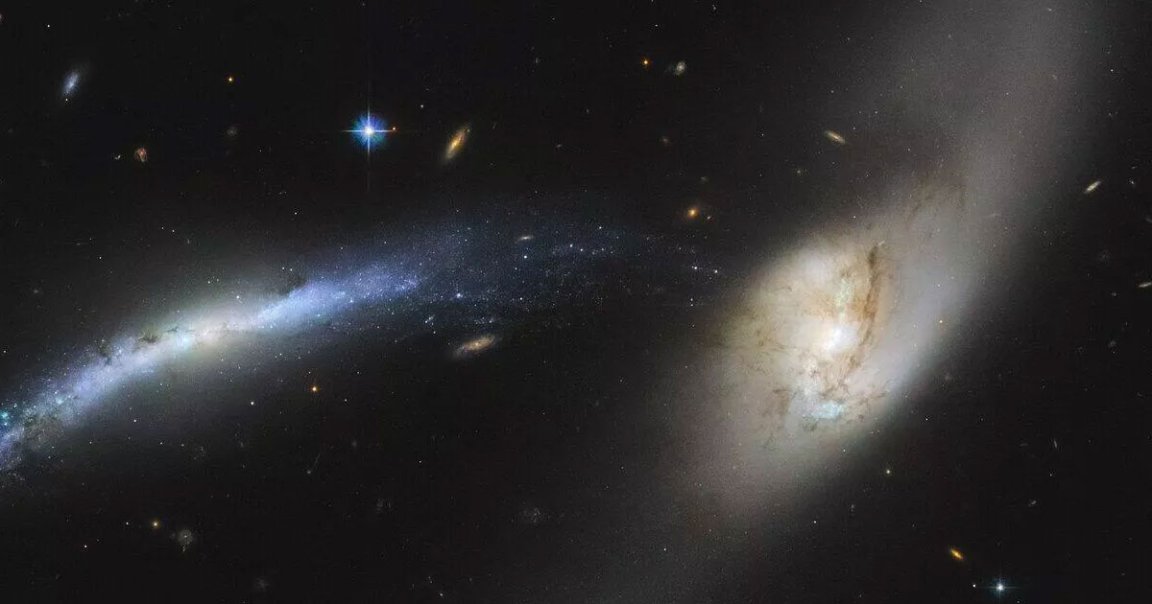
Galactic “Waterspout”
The Hubble Space Telescope just captured a spectacular new image of two galaxies starting to be pulled towards the center of another.

The two galaxies, NGC 2799 and NCG 2798, have already formed a “waterspout” showing one galaxy dripping individual stars like drops of water into the center of the other.
Drip Drip
The merging of two galaxies is a process that can take a very, very long time — up to billions of years. Thanks to the ample space between stars, the merger itself isn’t a violent process with stars typically just passing each other by.
Previous research indicates that the black holes at the centers of merging galaxies end up merging themselves, a hint as to why certain black holes can grow so large.
Astronomers theorize that our very own Milky Way is on a collision course with the Andromeda Galaxy, with the latter approaching the other at about 110 kilometers per second. While that sounds a lot, scientists predict such a collision will occur only in about 4.5 billion years.
READ MORE: Galactic Waterspout [ESA]
More on galactic mergers: When Galaxies Merge, The Black Holes In Their Hearts Fuse Together